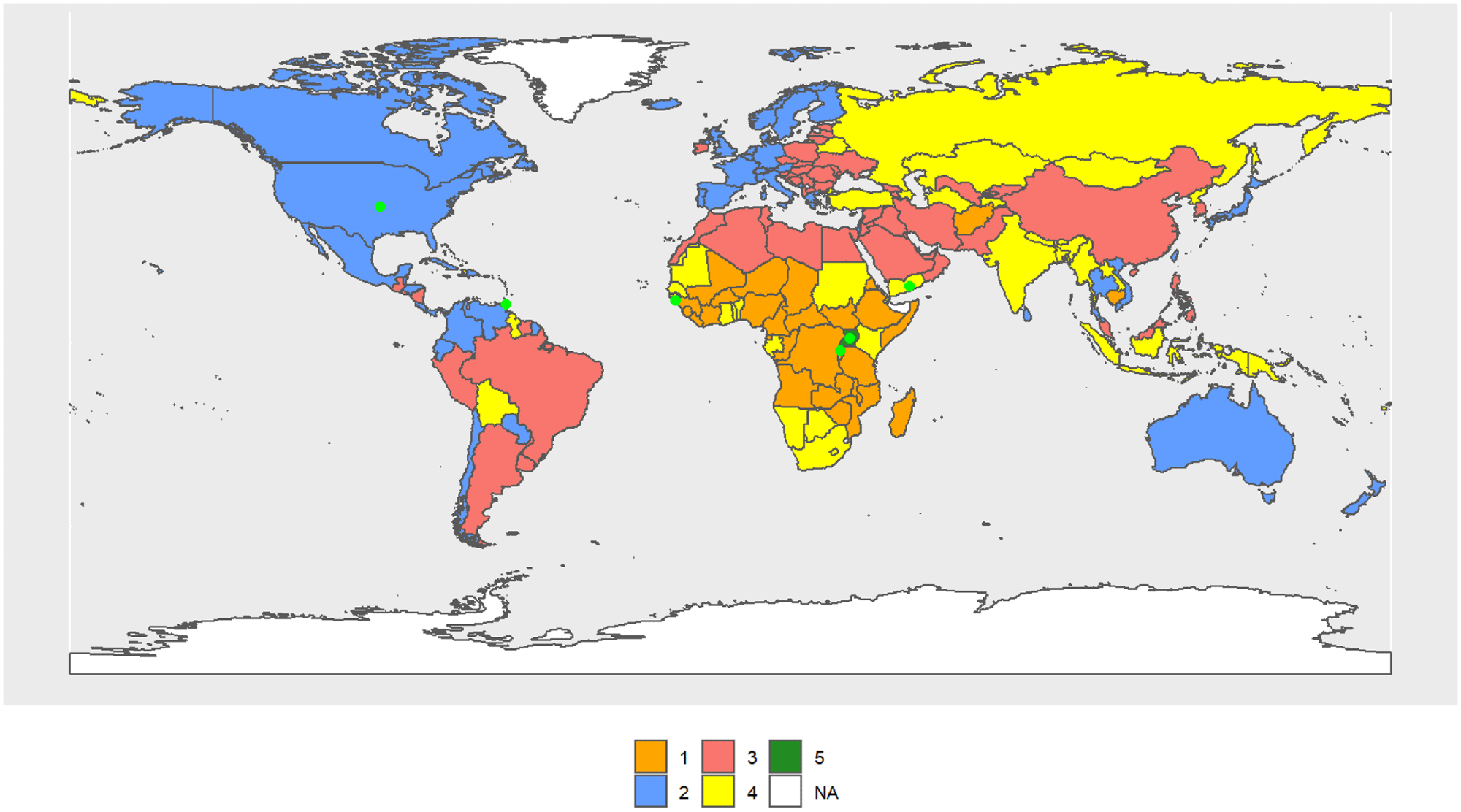In a recent study published in the journal PLOS ONE, researchers analyzed nine mortality indicators on a global scale, starting from 1990 and projecting to 2030, to understand concepts of convergence or divergence in mortality. They also grouped countries with similar mortality characteristics into convergence clubs, presenting insights into their potential future trajectories.
 World map of 1990 male clusters. Study: Convergence and divergence in mortality: A global study from 1990 to 2030.
World map of 1990 male clusters. Study: Convergence and divergence in mortality: A global study from 1990 to 2030.
Background
The global pattern indicates an increase in mortality and longevity over the last two hundred years, with broadly similar patterns in lower infant mortality and an increasing older population despite differences between countries in their trajectories. This pattern of improved longevity has led researchers to wonder whether there is a unique pattern of change in longevity and mortality and whether countries have converged or diverged toward this pattern.
Theories such as the epidemiological transition theory, which considers mortality a function of aspects of population dynamics such as fertility, mortality, causes of death, and life expectancy, have been proposed to be universal in explaining mortality change patterns. However, events such as the human immunodeficiency virus (HIV) crisis in the sub-Saharan countries in Africa have challenged such universal theories. Nonetheless, changes in mortality follow similar patterns in groups of countries that are either in the same geographical location and proximity to each other or have similar environmental and socioeconomic conditions.
About the study
In the present study, the researchers aimed to update the existing understanding of convergence or divergence patterns in mortality by conducting cluster analyses by sex for 194 countries that were representative of all the continents. Furthermore, the mortality patterns varied significantly across these countries. The analyses also considered multiple indicators of change in mortality other than life expectancy.
Two approaches were used to group the countries based on multiple mortality characteristics over time — the in-sample approach for the years 1990 and 2010 and the out-of-sample approach for projections for 2030. The primary aims were to understand the characterization of convergence or divergence in mortality and examine the evolution of these patterns in the future.
Apart from life expectancy and various other indicators, the researchers also used modal age at death to understand how the distribution of deaths has changed and whether mortality in the older age groups has also shifted. Indicators such as the Gini index, which measures inequalities in consumption or income across households or individuals, were used to decipher the differences in life length.
A multivariate statistical technique of clustering was employed to group countries into clusters based on similarities in sets of mortality indicators. The clustering evolution was conducted for three different years, separately for males and females, with five clusters being considered the optimal number for all three periods and both sexes.
The data for the study, starting from 1990 to 2020 was obtained from the United Nations Populations Division database, which contains demographic information for all the countries of the world. The mortality data was grouped by age, with information on children below the age of one belonging to one group and subsequent ones being groups of five years.
Results
The results presented an analysis of the convergence or divergence patterns in mortality across the globe from a temporal evolution perspective and a geo-economic point of view that was analyzed separately for males and females. The clustering evolution analysis showed that the mortality convergence clubs resembled the continental configurations of the countries,
The five major clusters were as follows: Central African countries; countries belonging to the Organization for Economic Co-operation and Development (OECD); one group consisting of North Africa, China, Latin America, Asian Turkey, and the countries that formed the former United Soviet Socialist Republic; the fourth cluster consisting of India, South Africa, and the Pacific Islands; and the last one consisting of Rwanda, Uganda, and Qatar.
The countries within these five clubs showed similar upward trends in all nine mortality indicators. The disparities between males and females in each country and the discrepancies between the five groups appeared to be reducing with time. The most significant changes in mortality indicators were observed for the African region, while for the high-income countries, changes were found to slow over time.
Additionally, while the disparities between males and females were found to be reducing in all five clubs and constituting countries, the researchers stated that the differences between the two sexes will continue in the future. They believe that the higher risks of cardiovascular disease, cardiac dysfunction, and mortality associated with the Y chromosome explain the sex-based differences in mortality that project into the future.
Conclusions
Overall, the findings indicated five clusters of countries that were grouped based on similarities in mortality indicators and showed similar patterns of improvement across nine mortality indicators and reduction of sex-based differences. The study reported that all countries, including the high-income ones, will improve across all nine mortality indicators, albeit at different rates.
Journal reference:
- Atance, D., Mercè, C. M., Varea, X., & Aburto, J. M. (2024). Convergence and divergence in mortality: A global study from 1990 to 2030. PLOS ONE, 19(1), e0295842, https://journals.plos.org/plosone/article?id=10.1371/journal.pone.0295842